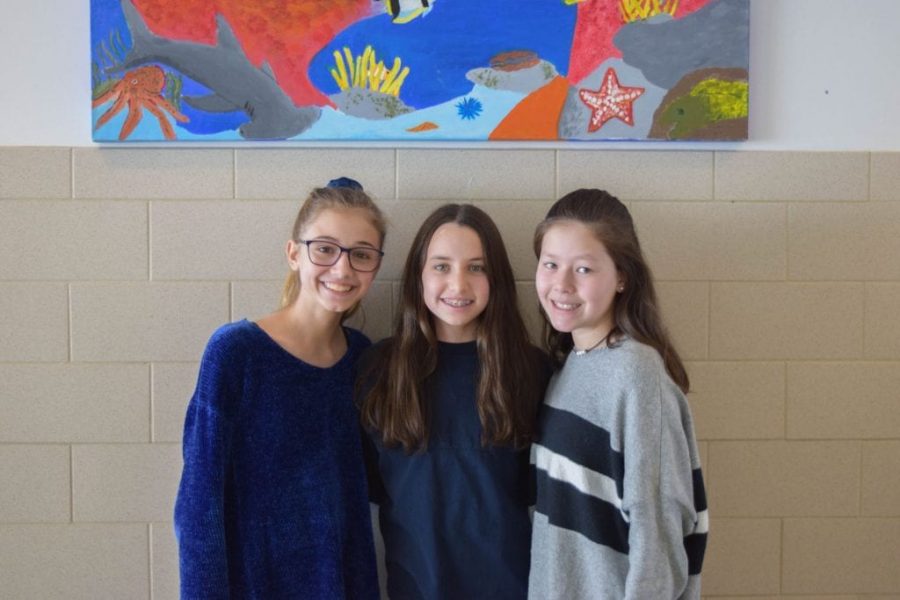Brewster Middle Schoolers Work to Eliminate Plastic Waste

Eighth-graders Moe Poley, Justine Wald and Alescia Nitti made a passionate plea to the Wellness Team and Brewster schools Director of Child Nutrition Services Cathy Hancock last month. The students were not asking for their favorite snacks or for more pizza. Instead, they campaigned to get rid of plastic straws in the Henry H. Wells Middle School cafeteria.
The students began their presentation and discussion by arguing to replace plastic straws with paper straws, providing a projected budget. Hancock explained that a price difference of just a few cents more per straw could cost the district thousands of dollars. By the end of the discussion, the students were advocating for eliminating straws as a whole.
“When we were thinking about it more, we felt like it isn’t really necessary to have a budget for straws at all. We should just eliminate them all together,” said Poley.
After taking a Marine Biology elective with Katie Allen last year, the girls have become passionate about eliminating plastic waste.
“We begin the course discussing currents and tides and how single-use plastics have entered our oceans and are now stuck in the five great ocean gyres including the Great Pacific Garbage Patch,” explained Allen. “These young ladies were disturbed by the impact plastics are having on our planet and asked me if they could collect plastic bottles in the school, recycle them and collect the money for various causes.”
With help from custodians, teachers, school administration, and their parents, the girls set up recycling containers in the cafeteria and at the front of the building and collected and deposited bottles. They even created a presentation for grade level meetings and put up posters explaining the problem with plastics and encouraging fellow students to recycle.
When the girls saw the difference they were making by collecting plastic bottles, they couldn’t help but think about additional ways to tackle the plastic problem. Plastic straws seemed like a good next step.
“Plastic straws are so small that people use them, throw them out, and they end up in the Pacific Garbage Patch where the current brings all the garbage to one place,” Wald explained. “It’s killing all the animals.”
“They’re really what’s killing our environment because small pieces of plastic are ending up in birds and fish and other animals,” Poley added.
In addition, plastic straws struck the girls as unnecessary.
“We have cartons of straws in the cafeteria and no one really even uses them — and if they do, they’re just playing with them,” Nitti explained. “We brought our idea to a few teachers who encouraged it and looked it over like Mr. Beall, Mr. Forte, Mrs. Allen, Mr. Koestner, Mr. Mulvihill and others.”
So what is their end goal? The girls hope to both reduce plastic waste and inspire others to do the same.
“If we can eliminate straws, other schools can also start eliminating straws. Our school alone can make a difference, but making it happen at a lot of schools can make an even bigger difference,” said Poley. “We just want to start eliminating plastic as a whole, slowly.”
According to Hancock, changes have been made since the girls’ presentation. Before, cartons of straws were available out in the cafeteria where anyone could grab as many as they wanted. Now, straws are kept in a controlled environment at the registers.
Allen is delighted by the girls’ efforts.
“I couldn’t be prouder that they are trying to remove unnecessary plastic straws from our building,” she said. “I look forward to seeing what other changes these remarkable young ladies will make to improve not only our school but our planet as well!”
